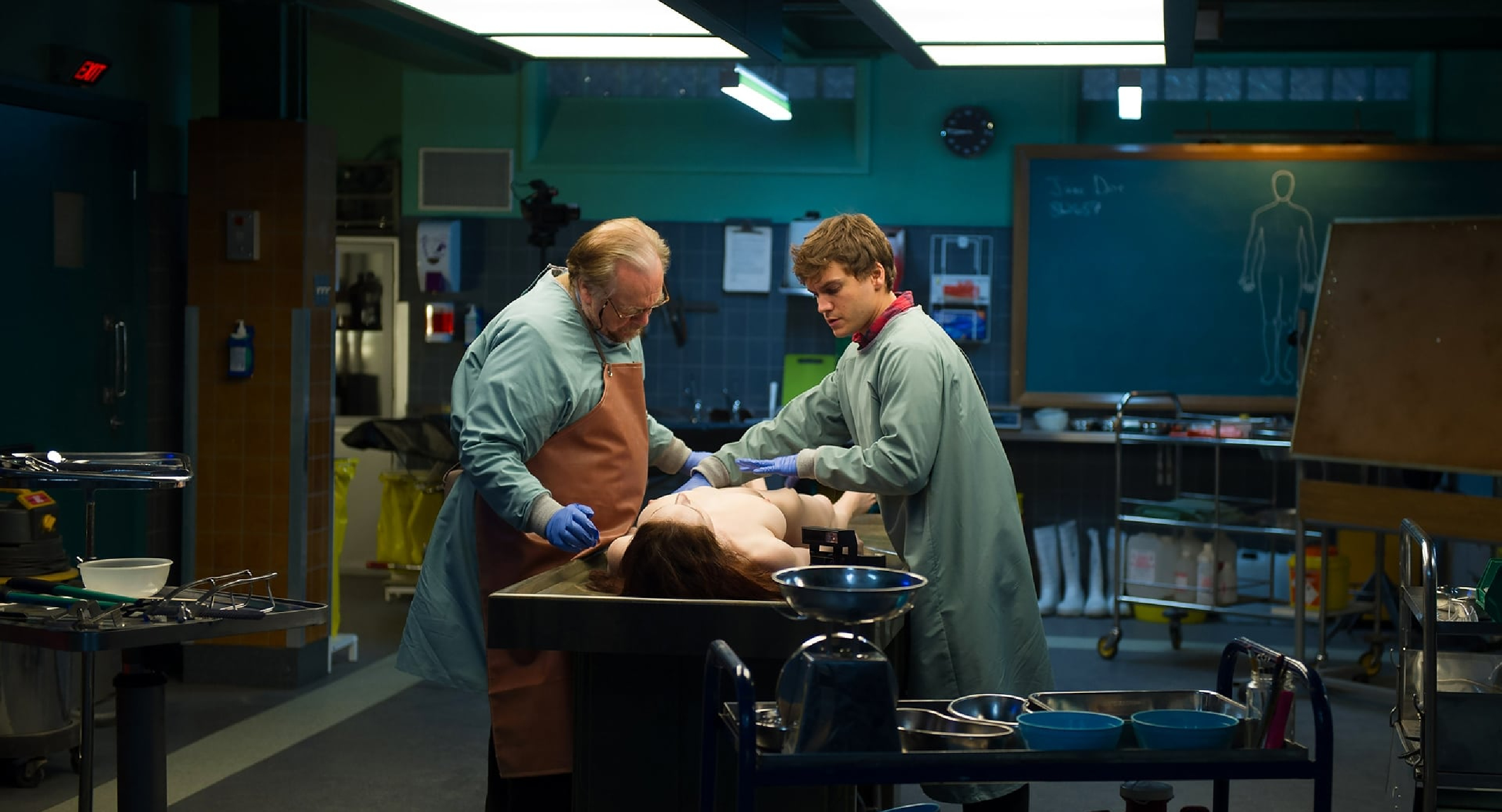The Autopsy of Jane Doe – Film Review
Published October 5, 2023

In the annals of horror cinema, there are few films that manage to blend suspense, mystery, and the macabre as effectively as The Autopsy of Jane Doe, directed by André Øvredal. This 2016 gem weaves a chilling tale set within the confines of a mortuary, exploring the mysteries of an unidentified corpse that holds secrets far beyond the realm of the living. Øvredal, known for his exceptional storytelling skills in films like Trollhunter, takes audiences on a nerve-wracking journey through the dark corridors of the human body and the even darker recesses of the unknown.
The film opens with the discovery of an enigmatic corpse buried in the basement of a crime scene. The body, beautifully played by Olwen Kelly, is devoid of any external injuries, leaving the cause of death a perplexing puzzle. Father and son coroners, played impeccably by Brian Cox and Emile Hirsch, are tasked with unraveling this mystery. From the outset, the film establishes an eerie atmosphere, with the dimly lit mortuary becoming a character in itself. The setting is meticulously crafted, evoking a sense of foreboding that permeates every scene.
At the heart of the film is the relationship between the father-son duo, Tommy and Austin Tilden, portrayed with remarkable depth by Cox and Hirsch. Their performances are a masterclass in conveying the nuances of a complex relationship strained by grief and a shared fascination with the dead. Cox’s portrayal of Tommy, a seasoned coroner, is hauntingly authentic. His skepticism in the face of the supernatural adds a layer of realism to the narrative, grounding the film even as it spirals into the supernatural.
Hirsch, as Austin, delivers a nuanced performance, transitioning from curiosity to terror as the autopsy uncovers increasingly inexplicable phenomena. The chemistry between the two actors is palpable, enhancing the film’s emotional impact. The characters’ vulnerability and fear become the audience’s own, drawing them deeper into the narrative.
The Autopsy of Jane Doe excels in its cinematography, with Roman Osin‘s camera work skillfully capturing the claustrophobic atmosphere of the mortuary. The meticulous attention to detail in the autopsy scenes is both fascinating and unsettling. The visceral nature of the autopsy is juxtaposed with moments of quiet horror, creating a visual contrast that heightens the film’s impact. The use of practical effects lends authenticity to the supernatural occurrences, making them all the more terrifying.
Beneath its horror exterior, the film delves into themes of mortality, grief, and the unknown. The examination of the human body becomes a metaphor for the characters’ internal struggles, highlighting the fragility of life and the inevitability of death. The symbolism, though subtle, adds depth to the narrative, inviting viewers to contemplate the mysteries of existence long after the credits roll.
The Autopsy of Jane Doe masterfully maintains a relentless pace, steadily escalating the tension throughout. The film expertly plays with audience expectations, subverting traditional horror tropes to deliver unexpected scares. Moments of quiet unease are punctuated by intense bursts of terror, keeping viewers on the edge of their seats. The suspense is palpable, making every creak, shadow, and unexpected noise a source of dread.
The Autopsy of Jane Doe stands as a testament to André Øvredal’s directorial prowess and storytelling acumen. Through its exceptional performances, meticulous cinematography, and thought-provoking themes, the film elevates the horror genre to new heights. It is a rare cinematic experience that lingers in the mind, haunting viewers with its eerie imagery and lingering sense of unease. If you are a fan of intelligent horror that engages both the mind and the senses, this film is an absolute must-watch. The Autopsy of Jane Doe is a chilling, visceral experience that cements its place among the finest examples of modern horror cinema.
